| Florida's Star | |
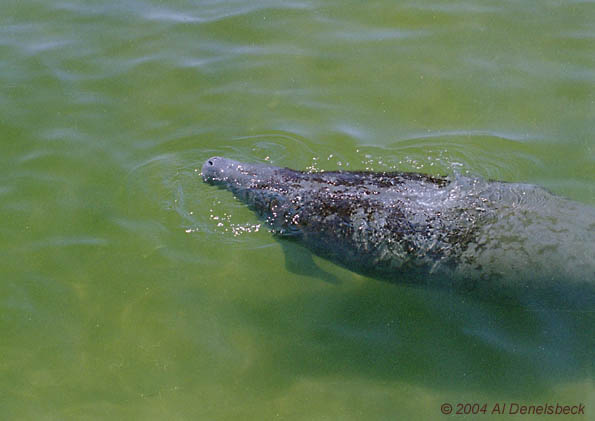 |
|
|
West Indian manatees (Trichechus manatus, also called Florida manatees) are one of the main attractions of Florida, at least as far as animals go – I think they come in second behind Mickey Mouse. Not to be cruel at all, but I always thought they looked like the beginning of evolution, prior to developing any external features. This isn't quite the case, even though they look pretty blobby – they have, in fact, evolved from land-based mammals. They're common enough in the Indian River throughout the year, but more so in the spring, apparently. I've been lucky enough to see them numerous times, from very short distances. My most fascinating encounter is given in detail at this link. Top, a young one less than 1.2 meters (four feet) long drifted by the fishing docks behind one of Melbourne's libraries – the shadow shows just how shallow the water is. At right, a much larger one creates a few bubbles when surfacing for air, then rolls onto its back for a quick sunbath. |
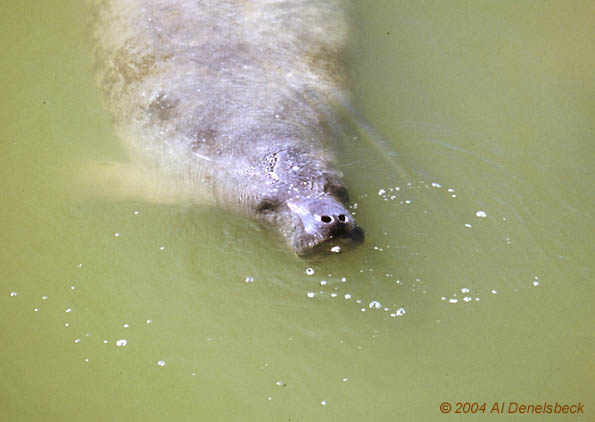 |
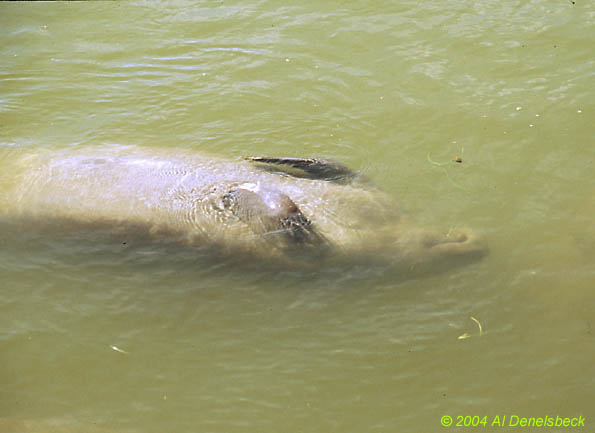 |
|
|
At right, a mother manatee and her calf come up in extremely shallow water to feed on the water plants among the rocks. I had been bicycling on the Eau Gallie Causeway across the river, looking for a good place to go snorkeling, when I spotted these two. Luckily, I had a decent camera along for just this purpose, so I took several photos from shore as they foraged practically at my feet. The calf is about a meter (3 feet) long, and I saw no evidence of trying to nurse so I'm assuming it was newly weaned, though I'm no expert. Mama shows something that I've seen on every adult manatee so far: Distinct propeller scars. Boats are far and away the most dangerous threat to manatees in Atlantic waters. Florida maintains strict rules of operation for boats in shallow waters, and I have seen no violators of these yet. Still, boating is a major recreation in the state, and as air-breathing mammals, manatees have to be right at the surface periodically to breathe. They are typically very slow-moving, and accidents happen. But before I paint too ugly a picture... |
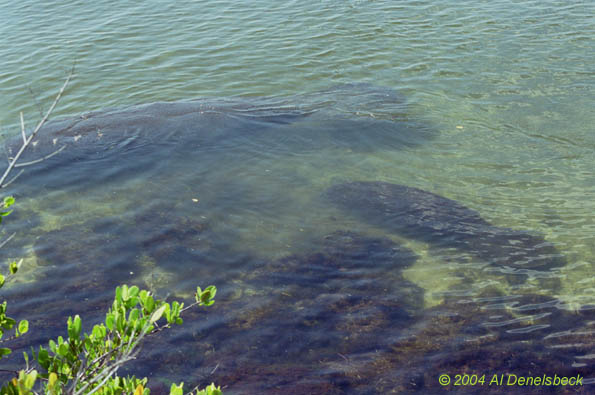 |
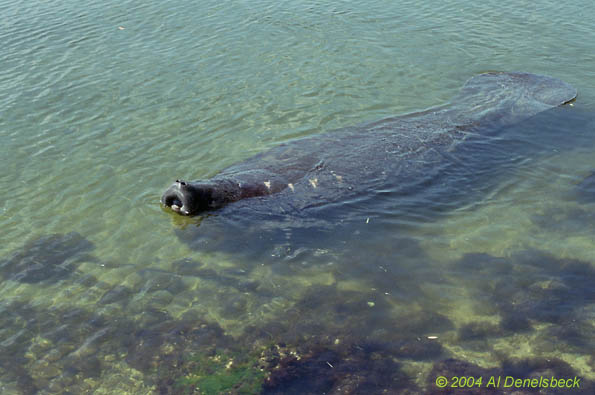 |
|
| I should also note that massive efforts are being made to protect them, as well. Besides the fact that they're on the international endangered species lists, there are numerous organizations devoted to assisting them, among them the 'Save the Manatee Club' that receives a great deal of support and attention due to the efforts of singer/songwriter Jimmy Buffet. A short websearch will turn up a lot of information on both manatee habits and the efforts to preserve the species. As well as much better photos than I've taken so far ;-). | 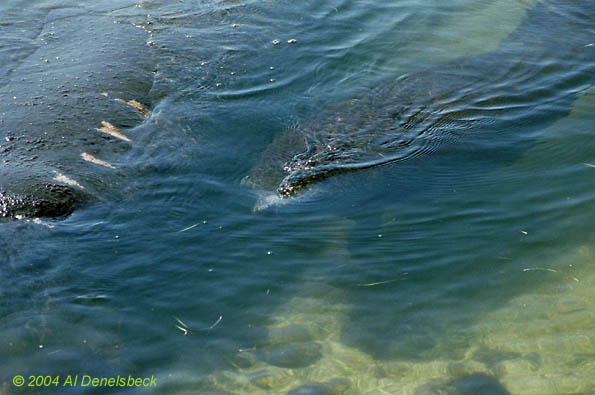 |
| Immediately after these photos, I took up a disposable underwater camera and waded in right behind the calf, just over 2 meters (6 feet) away. Despite my care not to disturb the water, my presence wasn't a welcome thing, and the pair decided to move further away. My two shots with the camera held underwater failed to produce anything at all. Though the view looks clear from the surface, you have to realize that you're looking through only a few inches of water, and it's a different matter altogether when shooting through the suspended sediment. | 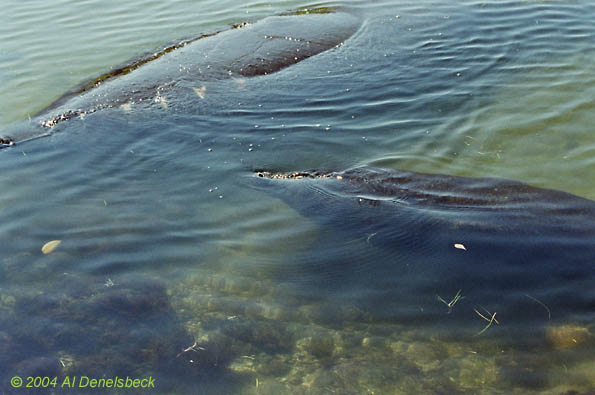 |
